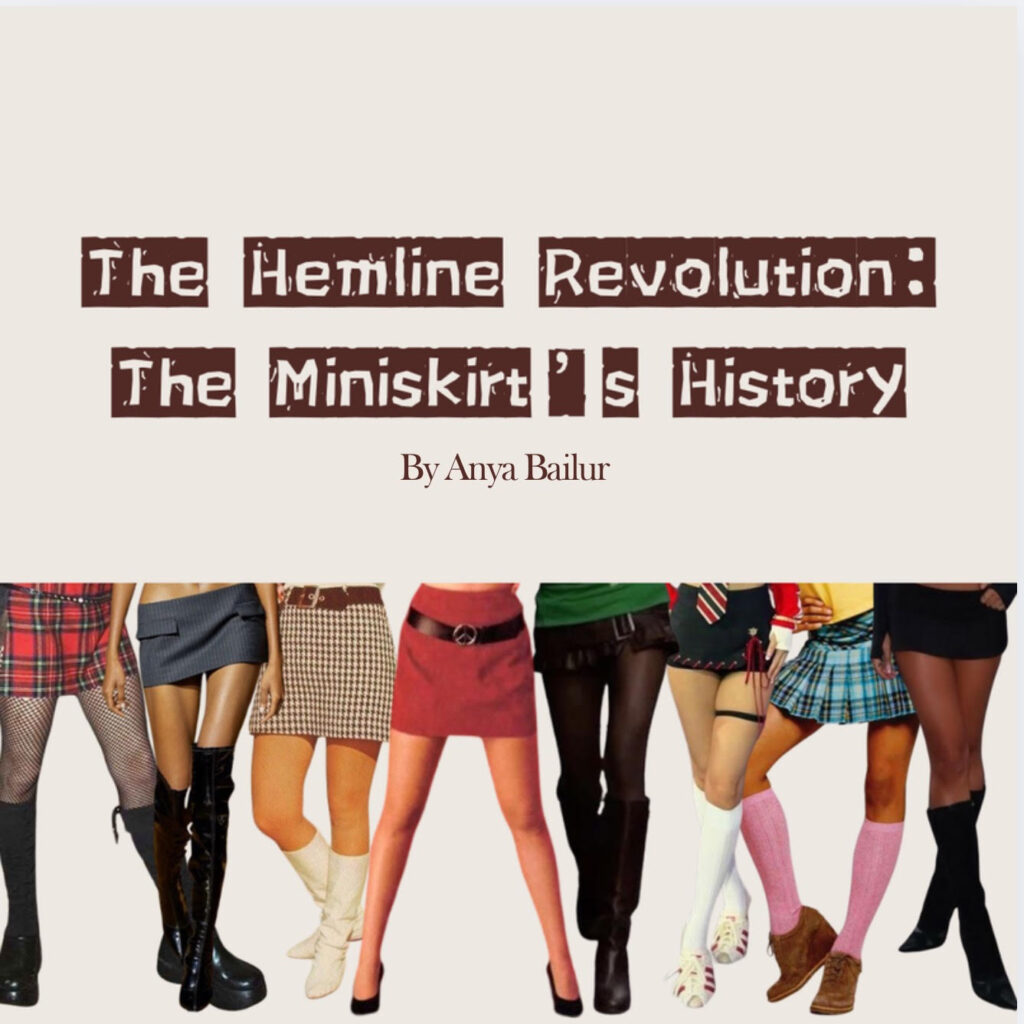by Anya Bailur
How can a few inches of fabric reveal so much about the socio-economic state of society? Mary Quant, perhaps inadvertently, opened the world up to this question when she took scissors to a skirt and cut through years of tradition.
The 1950s saw women confined to the “private sphere”, working mostly in domestic roles with limited options for work. But the ‘Swinging Sixties’ saw a change, a refresh, as skirts became shorter and consumer confidence rose. The figurehead of this movement was, of course, Mary Quant: a pioneer in her field, Quant took dresses and hemmed them just above the knee in the mid-sixties. It is, however, important to note that this trend was not entirely new at this time; short skirts had existed for years prior. Yet, Quant was an early advocate for the look; often credited as the original designer herself, she brought the miniskirt into the mainstream by tapping into youth culture, such as the ‘Swinging London’ movement.
The timing of the popularity of the miniskirt should not go unnoticed. The advent of the 1970s saw increased movements for Women’s Liberation, with many legal reforms taking place at the turn of the decade. Divorce Reform, the Equal Pay Act, and more bills were all passed in the 1970s. Even contraceptive pills became available on the NHS at this time, providing greater autonomy for women when having children, although this was less true in actuality as societal pressure continued.
Miniskirts became the theoretical metric for women’s liberation. As feminism evolved, modesty culture was challenged both in fashion and legal circles, providing greater scope of choice for women in many aspects of life. The shorter the hemline, the greater the power.
There was even an economic significance to the miniskirt revolution, as visible through the Hemline Index Theory. This posits that the shorter the hemline of women’s skirts, the greater economic prosperity in a country. While it has proven to be a somewhat tenuous link, the theory uses factors such as consumer confidence and disposable income to make its claim, arguing that women wearing shorter skirts reflects wider confidence in the economy. The decline of the miniskirt in the ‘70s certainly supports this theory.
With economic decline, strikes, and a three day working week in the UK, the 1970s saw a shift in the post-war consensus that had dominated the UK government. A stagnant economy was coupled with inflation, leading to the infamous stagflation; but while prices were going up, hemlines were going down. Many designers wrote off miniskirts as a fad, a temporary trend that would soon fall into the depths of fashion mishaps. Yet, by the time punk culture came onto the scene, miniskirts were revitalised. Imbued with a new purpose, fashion choices for women changed, and trousers and miniskirts were the new norm. The maxi and midi skirts being pushed by designers were met with little reception at this time.
The 1980s saw a fierce miniskirt comeback, largely attributed to high profile icons such as Madonna. Brands that had previously dismissed miniskirt were once again popularising them, such as YSL or Karl Lagerfeld. Politically, the miniskirt became associated with third wave feminism, by arguing that women’s safety should not be dependent on their fashion choices. This coincided with the popularity of the underground ‘Riot Grrrl’ movement, which vowed to challenge patriarchal views by addressing matters of domestic abuse or sexual assault. By the start of the 21st century, miniskirts were rooted in mainstream culture, becoming one of many options of fashion choices for women. A poll conducted in the 2010s indicated that the average age of a woman buying a miniskirt was 40, illustrating that it was not an age-specific trend.
The popularity of the miniskirt certainly mirrored economic trends and the progress for women’s liberation. A simple change of a few inches brought new ideas to feminist discourse, and hemlines made headlines.
edited by Rinikka Kapoor

